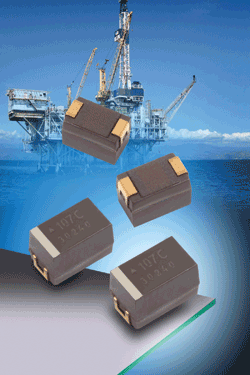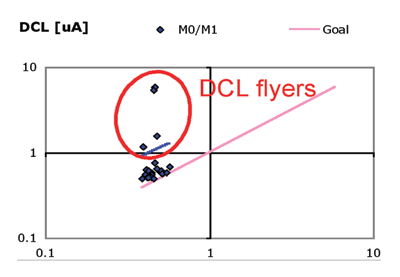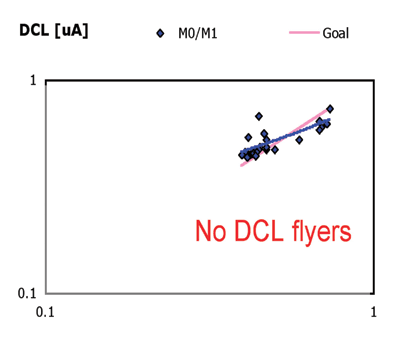The importance of high-temperature capacitors
Developing SMD tantalum capacitors for continuous operation at 200°C
BY RADOVAN FALTUS, TOMAS ZEDNÍCEK, and M. KALOUS
AVX, Czech Republic
http://www.avx.com
Industries such as oil-drilling, aerospace, and automotive have applications that require components to work continuously at temperatures up to 200°C. Solid tantalum capacitors are well-known for their excellent reliability, robustness, and stable parameters. They have also been available for continuous operation at 125°C since commercial capacitors were first developed. Surface-mount devices with 150°C capabilities were introduced in 1998 followed by 175°C devices in 2003.
Capacitors are one of the key components in any electronic device and system. Their main functions include power supply voltage smoothing, supporting the energy source, and filtering.
Application requirements
Reliability is key requirement in typical aerospace and defense applications — where engines, turbo fans, and control and sensing electronics are placed near outer shells of rockets and space shuttles. Automotive applications, such as small gearboxes or embedded alternators/starters, also require reliability and long life at elevated temperatures.
In the oil and gas industries, high temperature capacitors are needed for the Dc/dc converters used in drilling heads that experience rising ambient temperatures the deeper they drill. Oil drilling applications require capacitors for use in control circuits at 3.3 V (digital) and 5 /15 V (analog). The oil industry also has specific service interval requirements: the minimum-requested continuous operating time is 1,000 hours at 200°C. Recent industry demands have shifted conditions to 2,000 hours operating time at 215°C.
Automotive applications require 12 and 24 V for power lines that, allowing for derating, meaning voltages from 25 V and up must be provided. In combination with high temperature, this is a real challenge.
Standard tantalum capacitor technologies have an operating temperature range of –55° to 125°C, which covers the needs of consumer electronics, computers, mobile phones and in-cabin automotive electronics. There are a variety of automotive applications, specifically situated near the engine, which require components to work at higher operating temperatures. Some manufacturers have introduced automotive product families to satisfy the needs of the automotive industry, which expand the use of tantalum capacitors to engine compartment systems with operating temperatures of up to 175°C.

Materials development
Higher operating temperatures affect both the chemical and mechanical stability of all materials used in the production of capacitors. The tantalum anode, encapsulant and terminations are the three key areas that require special attention when extending operating temperatures to 200°C, and it is necessary to consider the effects of both operational stress and storage at high temperature.
The real challenge when moving from 175° to 200°C is dealing with the epoxy-based compounds that are used in capacitor manufacture, such as the moulding resin and silver adhesives. These materials have a glass transition temperature of around 175°C. The value of the coefficient of thermal expansion is significantly higher above the glass transient temperature, so cracks and delaminations in the capacitor layers are much more likely to occur at elevated temperatures. Thus the selection of suitable materials is very important.
Tantalum anode
Reliability testing coupled with the long-term production experience of many capacitor manufacturers has proven that tantalum capacitors with MnO2 cathodes are capable of being stored at high temperatures, provided specific procedures are followed.
The type of tantalum powder that is used is crucial for creating a robust anode. Powders from various producers differ marginally in granularity, porosity, and purity, factors that all influence capacitor reliability.
The forming of homogenous dielectrics with maximum safety formation parameters, together with a robust anode wall structure results in a tantalum anode that can absorb thermomechanical stresses and to survive adverse environmental conditions including high temperatures and high humidity.
Encapsulation
The encapsulation material must be able to absorb stress from thermal shocks as well as create an effective barrier to prevent penetration by moisture due to humidity.
The effects of thermal shocks can be reduced by selecting a moulding compound with a low thermal expansion and high glass transition temperature. High strength at high temperatures and good adhesion to the lead-frame reduces the chance of cracks forming in the encapsulant, and allowing humidity to penetrate. IPC level 2 – a minimum required level of cracking resistance – requires zero cracks after 168 hours at 85°C in 85% relative humidity and three times 90 s solder immersion at 220°C. Humidity resistance is further improved if the encapsulant has a low water absorption tendency.
Today, lead-free solder is the most common assembly process. Components that are lead-free process-compatible must be able to withstand reflow at peak temperatures up to 260°C. They must also meet environmental standards that ban using Sb/Br compound as fire retardants. Encapsulants should also be color-stable and markings must remain legible after storage at 200°C.
Terminations
Conventional tin/tin-lead terminations have melting points between 183° and 210°C, which is too low for reliable operation at 200°C. Among the applications that require 200°C operational capacitors are hand soldered or mounted hybrid circuits, so the most suitable terminations are gold plated ones that are environmentally friendly, highly reliable, and temperature stable.
Developmental results
Experience in producing capacitors that are capable of continuous operation at 175°C has enabled manufacturers to specify materials (powder, silver, moulding resin, etc.), designs and procedures that result in high-reliable devices even after storage and cycling at 200°C.
Tantalum capacitors are 100% screened during production at accelerated conditions at 200°C to eliminate potential failures. Devices are purposely over-stressed by combinations of high voltage and temperature, cyclic thermal shocks and current surges. This guarantees reliability of screened parts.
Leakage current (DCL) stability is an important measure of production process quality. Using a standard aging process (capacitors are exposed to high temperature at the defined voltage for several hours, then failed capacitors are removed) certain leakage current “flyers” were noted after final life testing. To improve stability, additional long-term aging and further leakage current testing at capability limit with screening was put into the production process.

Leakage current flyers of E100 µF/16 V after 200°C, 1,000 hours life test. (Standard aging)

Leakage current stable, E100 µF/16 V after 200°C, 1,000 hours life test, (Long term aging performed)

Stability of leakage current, E100 µF/16 V at 200°C, 0.3 Ur, M1 after 1,000 hours, M2 after 2,000 hours
200°C tantalum caps
Capacitors require voltage derating at high temperature. Maximum operating voltage considering actual operating temperature is termed “category voltage,” which at 200°C is equal to 30% of rated voltage at room temperature (0.3 x Ur). A 16-V device thus suits 5-V analog circuits at 200°C and a 10-V part can be used for 2.5- and 3.3-V digital circuits in similarly high temperatures, such as drilling heads. Leakage current (DCL) doesn’t exceed 1 mA after 1,000 hours of continuous operation at 200°C for both p/n 100 µF/16 V and 220 µF/10 V.
The introduced 200°C tantalum capacitors provide continuous and reliable operation in many harsh environment applications, opening new possibilities for use in oil and gas industry drilling systems. ■
Advertisement
Learn more about AVX





